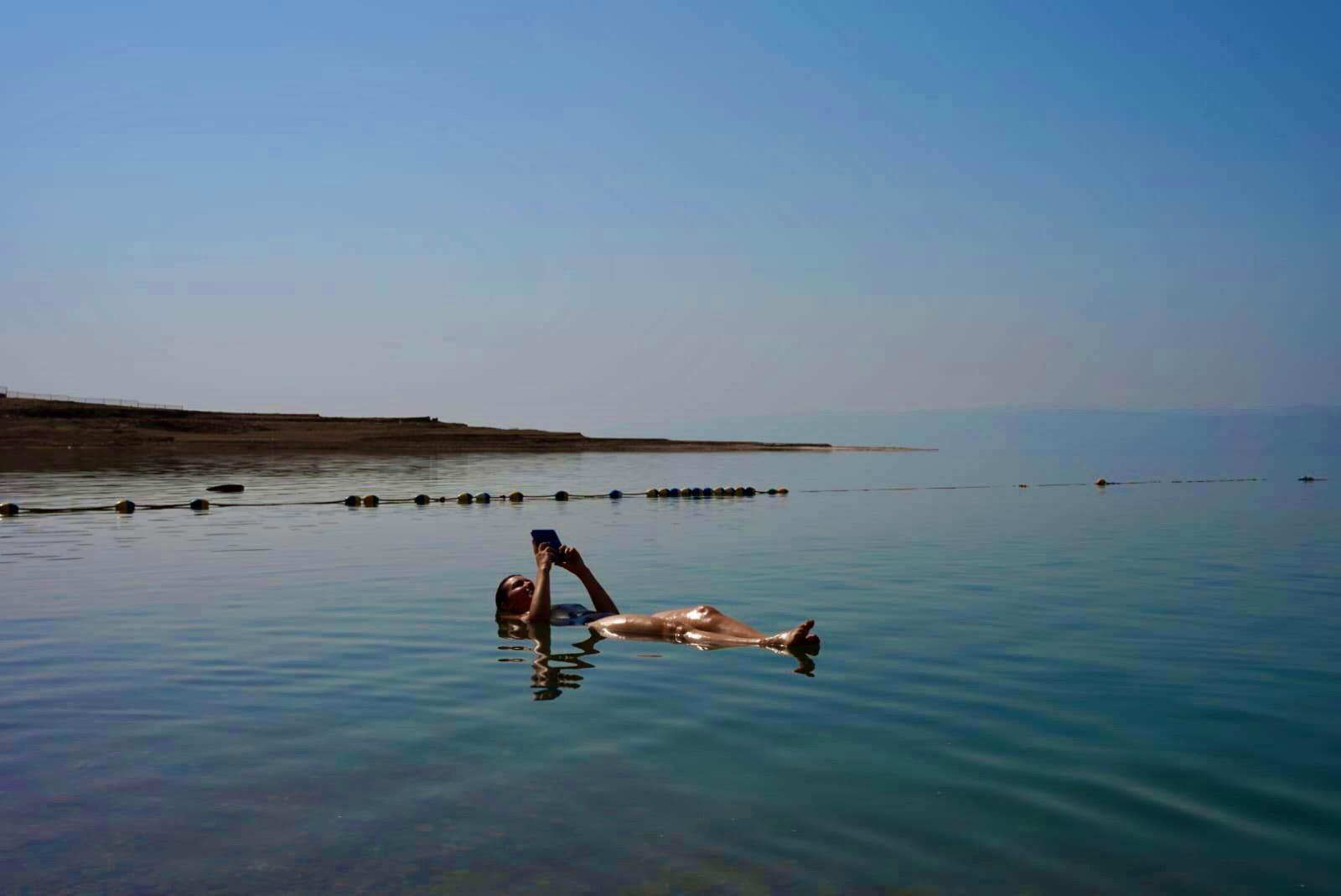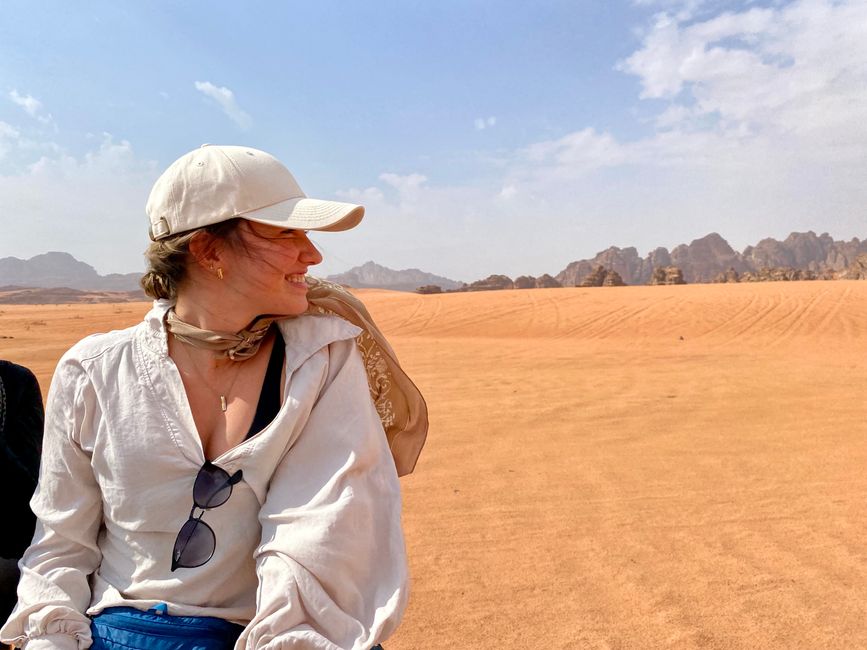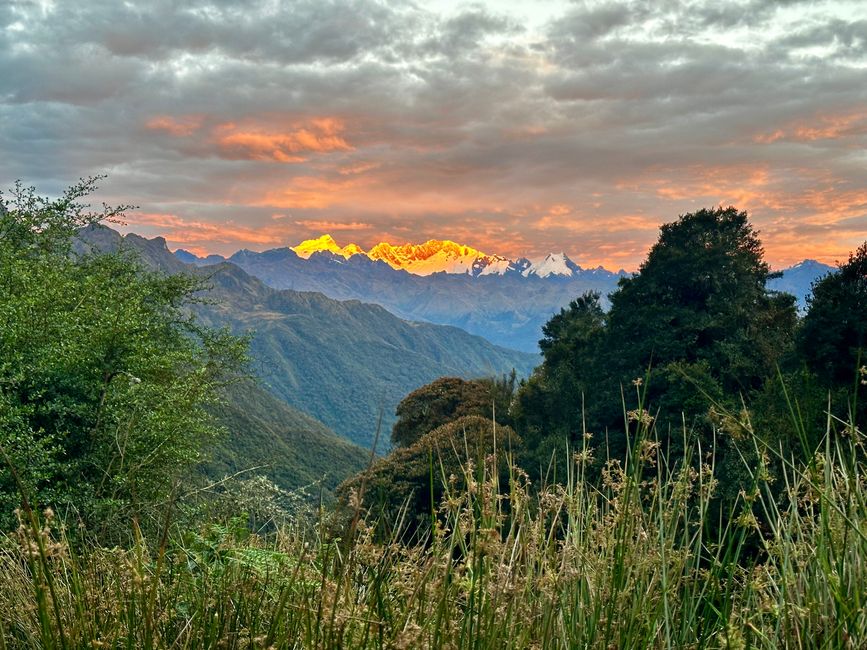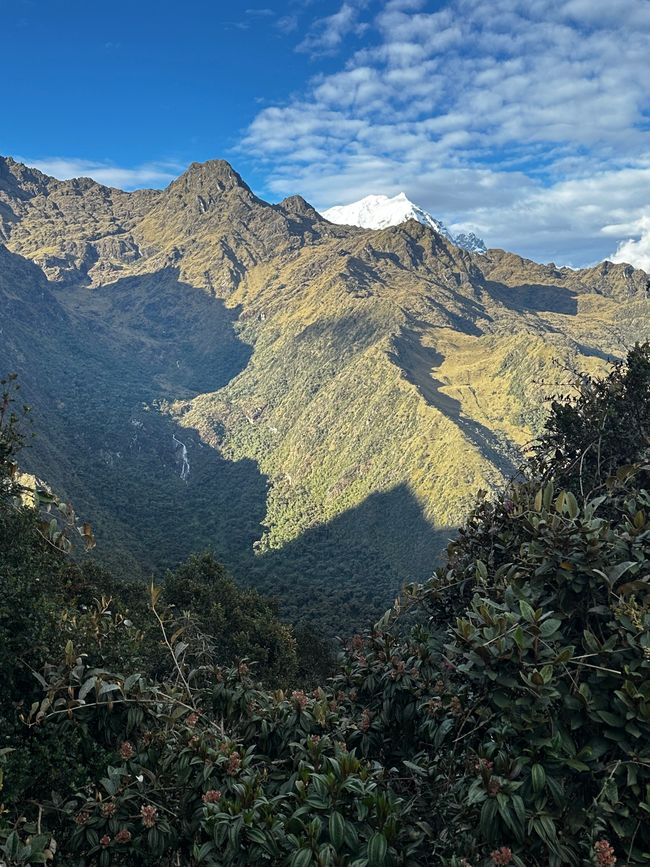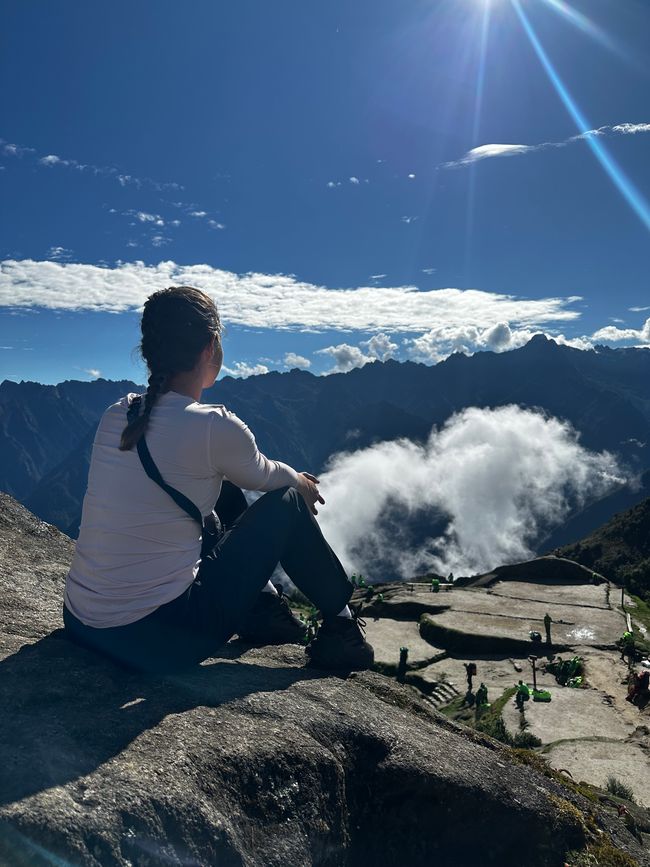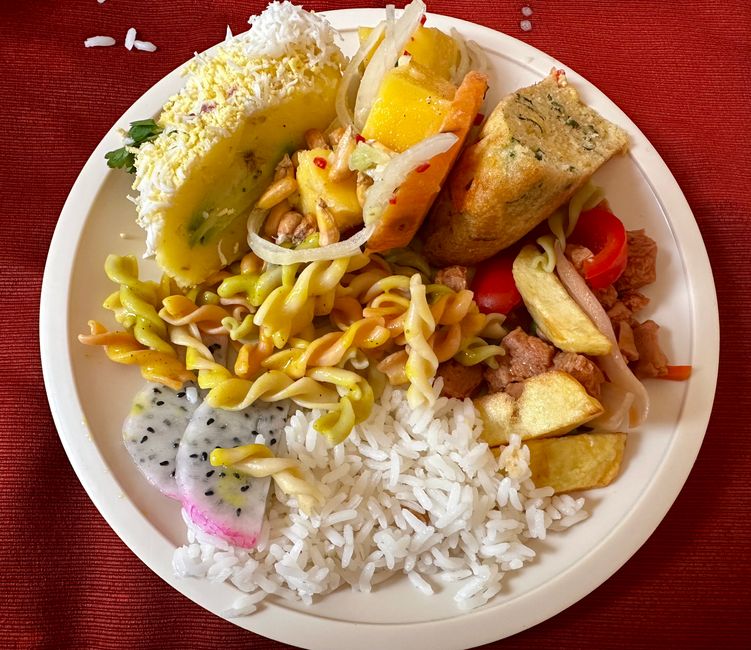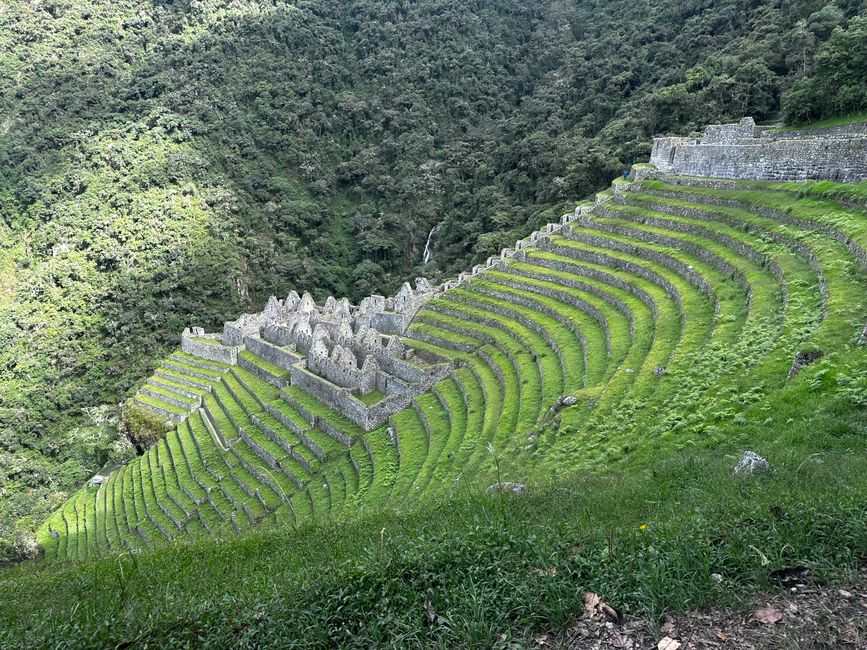“Rest day” on the Inca Trail
نشرت: 17.05.2024
اشترك في النشرة الإخبارية
Today we start the third day of the Inca Trail and after yesterday it can only get easier - a rest day. Before breakfast we see the Pumasillo mountain illuminated by the morning sun, simply wonderful!
We start at Camp Chaquicocha at 6:45 a.m. and walk uphill for a bit, but not the same stairs as we climbed yesterday. After a short while we see the Salkantay mountain to our left, with an astonishing height of 6,270 m, covered in snow and illuminated by the sun. Along the overgrown paths we repeatedly pass viewpoints that, thanks to the weather, allow us to look incredibly far into the depths of the Andes. The sound of the rainforest that I already know from Ecuador accompanies us. The area we are in is surrounded by a humid environment and cloud cover that allows all kinds of plants and trees to grow. We take a well-deserved break at Phuyupatamarka at an altitude of 3,600 meters. We are very lucky with the weather and from there we can see the archaeological site of the same name, Phuyupatamarka, Intipata and also the mountain Machu Picchu. I'm already starting to get excited because I now know that the site of Machu Picchu is on the other side of this mountain and that I will finally be there the next day.
From now on, the descent begins, which will last until midday, when we arrive at our camp at 2,650 m. First, however, we take a look at the site of Phuyupatamarka ("building on the clouds"). What exactly this is is unclear, but the design of the complex suggests that the Incas used this place for astronomical observations. While we sit on the terrace of this site, Abelardo tells us a lot about the Incas and the societies that lived in the Andes long before the Incas.
The next stop is Intipata ("Terraces of the Sun") at 2,930 m. Intipata consists of hundreds of terraces that were used by the Incas to plant corn, yucca and sweet potatoes, for example, and to supply the people of Machu Picchu. While we wait for the rest of our group, we make ourselves comfortable on one of the terraces and use the time for a short siesta. The last part of today's hike only takes about 30 minutes and leads to our camp Wiñaywayna. After lunch, we visit the archaeological site of the same name, which is right next to our camp. Another site full of terraces for growing corn, potatoes and other foods. In the upper part of Wiñaywayna there is another temple that, like the temple on the first day, is dedicated to the rainbow. There is also a well here that was used for rituals and ceremonies, for example.
From here we also see the Inca Trail, which you can use to hike to Machu Picchu in just two days. We learn that the Inca never built paths in a zigzag pattern. If it was not possible to climb up the stairs, the path led around the other side of the mountain to get to the top. One reason for this could be the generally increased risk of landslides in the Andes, which should not be increased by too many paths in one place. We have been walking the "Camino Inca" since the second day and now learn that there are almost 60,000km of Inca trails. Of course, not all of them lead to Machu Picchu like ours, but the Inca spread so far across South America that you can even walk parts of the Inca trails in Chile and on the coast of Brazil. Even though it was never part of the Inca Empire, Inca relics have been found there that show that the Incas were at least there. It is believed that the Incas searched for the sun in the east and so walked from Cusco through the Andes and the rainforest until they finally reached the Atlantic. Maybe I'll walk the Inca Trail there again when I travel to Brazil to tick off the next wonder of the world.
After exploring Wiñaywayna, we still have some free time. Here in the camp, in addition to the usual warm bowl of water, there are showers for the first time, which are so cold that I immediately regret it. But tomorrow we're going to Machu Picchu and then back to civilization, so it was worth it. After tea and dinner, we thank the crew who accompanied us and looked after us over the last few days. We'll get breakfast tomorrow, but then they have to go straight to Aguas Calientes to take the train back to Ollantaytambo and then the bus back to Cusco.
So today we have to go to bed early again so that we can get up early tomorrow.
Activity statistics today: 10km, 1000m elevation gain, 18k steps.
And I can't wait to write tomorrow's blog post!
اشترك في النشرة الإخبارية
إجابة

تقارير السفر بيرو
